Our final Supper Club event in Portland was held at the beautiful Good Mod on July 13th. Photos by Ryan Fish.
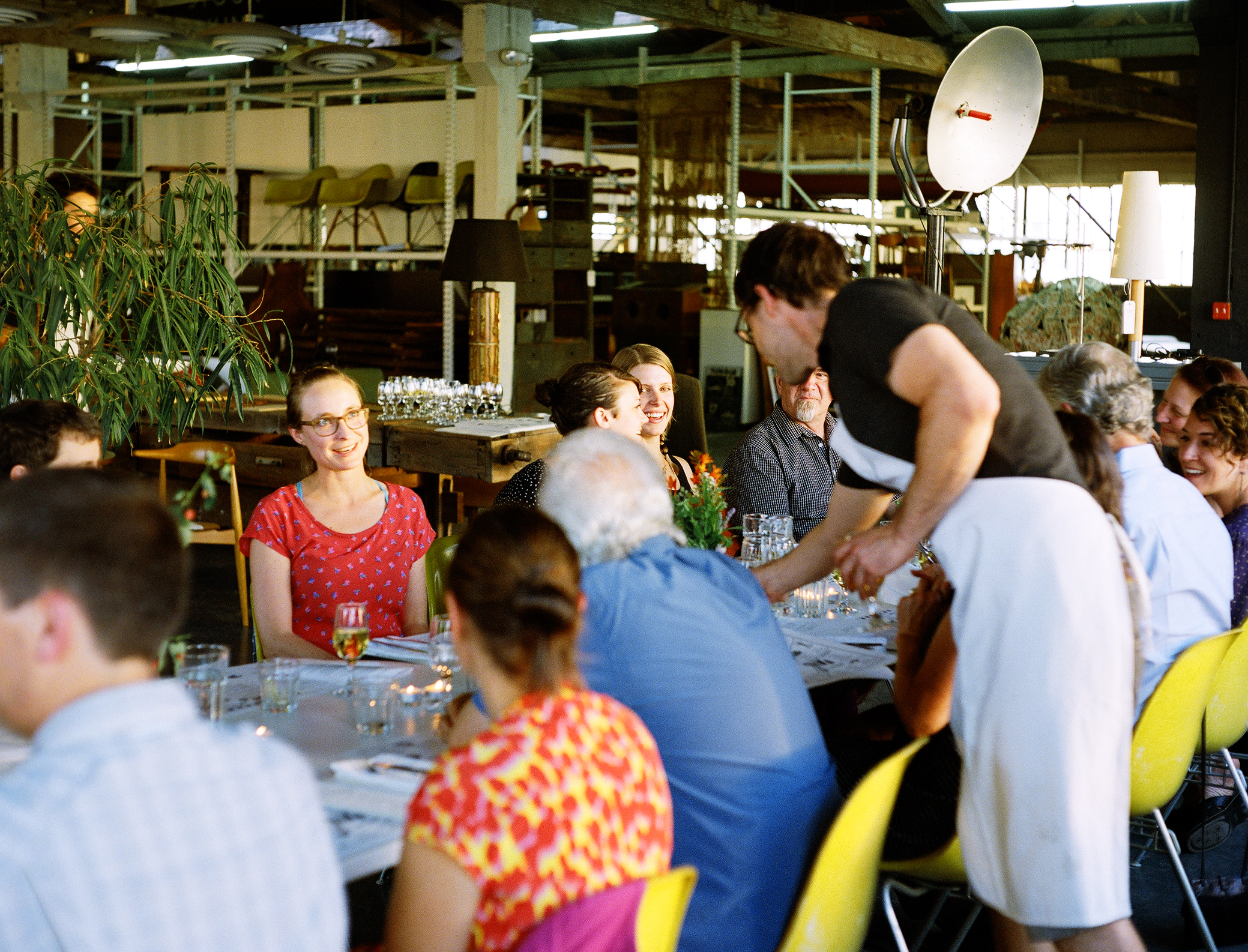
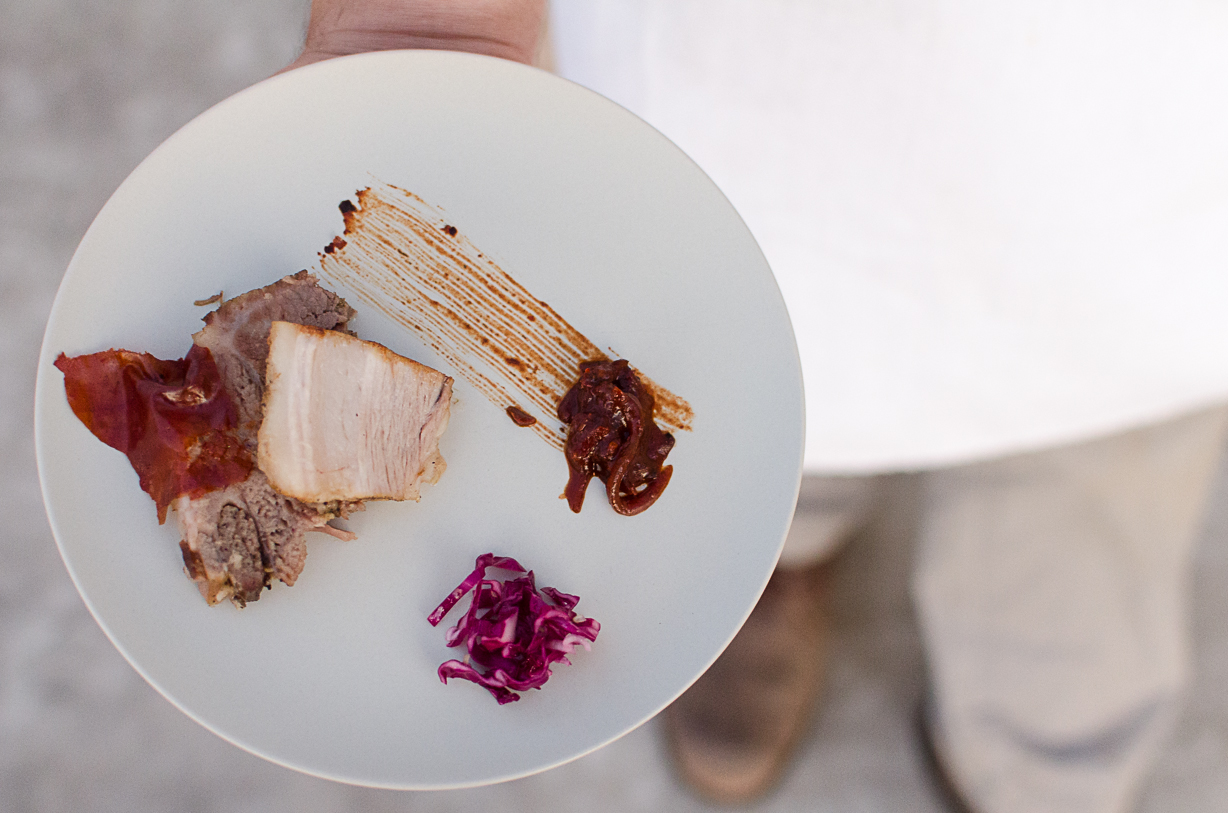
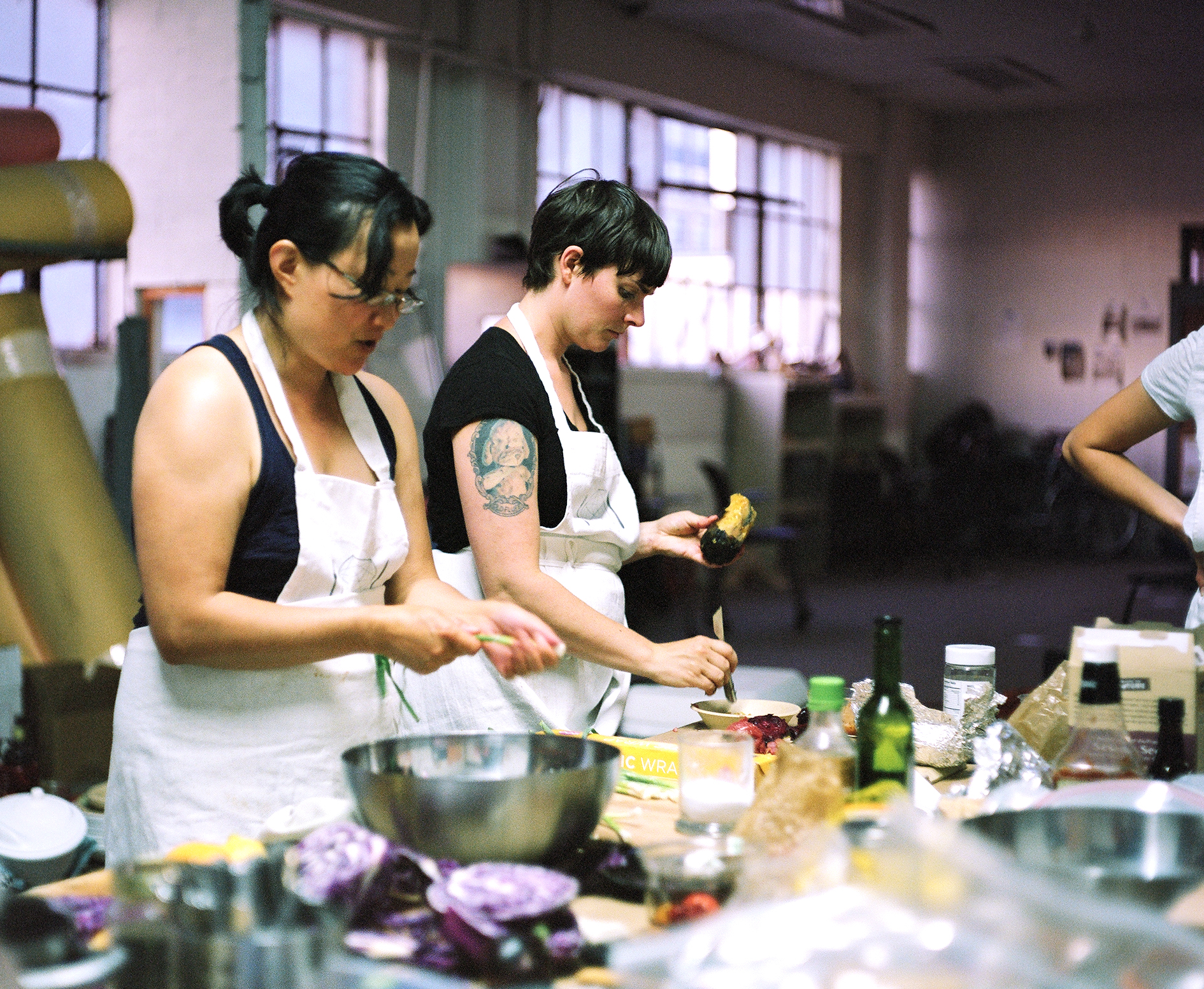

Our final Supper Club event in Portland was held at the beautiful Good Mod on July 13th. Photos by Ryan Fish.




On Friday we hosted a DIY Biohacker Meetup in Portland, OR to share and receive feedback on some current projects.
The Center presented its research on mutation (radiation) bred varietals and proposed a sticker campaign to label known products containing such varietals. Each sticker includes a QR code that links to the International Atomic Engery Agency’s Mutant Variety Database.
In addition, the our intern Corey presented his current research on the Spice Mix Super Computer 2.0- an upcoming project in digital smell sharing.
Portland, OR is home to a plethora of foodies, culinary masterminds and adventurous eaters. I fit in somewhere as an adventurous mastermind with a deep appreciation for food. As far as food explorations go, I’ve eaten a pretty healthy sampling throughout my life, and I’d go so far as to say I’ve been more adventurous than the average person. The Center for Genomic Gastronomy’s first Planetary Sculpture Supper Club, held Saturday, June 15th, introduced me to some interesting and incredible dishes, as I was fortunate enough to work alongside the conceptual culinary goddess, Heather Julius of Special Snowflake Studio.
Five courses were prepared and presented to our guests for the evening, with each dish accompanied by a bit of context and relevancy. Food was the medium through which the narrative was told of how humans have sculpted the planetary biosphere.
Zack and Cat introduced each dish, while Heather, myself and a few other trusty CENTGG interns and volunteers prepped and plated behind the scenes.
The main course featured squab and the presentation of this dish became the highlight of my evening as I took on the role of Resident Beet Blood Splatter Artist. Behold my handiwork below.
The evening was a success and was promptly followed by a well-earned celebratory drink.
If you are interested in attending one of the upcoming Supper Club events, you may find all necessary information here: Planetary Sculpture Supper Club Events and Tickets
Strange things start to happen when you list headlines in order of appearance…..

Modified Wheat is Discovered in Oregon.
Japan and South Korea bar imports of U.S. wheat,
Modified Wheat Is Discovered in Oregon
By ANDREW POLLACK
Published: May 29, 2013
Unapproved genetically engineered wheat has been found growing on a farm in Oregon, federal officials said Wednesday, a development that could disrupt American exports of the grain.
The Agriculture Department said the wheat was of the type developed by Monsanto to be resistant to the herbicide Roundup, also known as glyphosate. Such wheat was field-tested in 16 states, including Oregon, from 1998 through 2005, but Monsanto dropped the project before the wheat was ever approved for commercial planting.
…
Japan and South Korea Bar Imports of U.S. Wheat
By VICTORIA SHANNON
Published: May 31, 2013
Japan and South Korea suspended some imports of American wheat, and the European Union urged its 27 nations to increase testing, after the United States government disclosed this week that a strain of genetically engineered wheat that was never approved for sale was found growing in an Oregon field.
Although none of the wheat, developed by Monsanto Company, was found in any grain shipments — and the Department of Agriculture said there would be no health risk if any was shipped — governments in Asia and Europe acted quickly to limit their risk.
…
Genetically Altered Wheat in Oregon Comes as No Surprise
By MICHAEL WINES
Published: June 5, 2013
One week after the revelation that an Oregon farmer had found genetically engineered wheat growing in his fields, scientists remain mystified over how the strain — apparently the remains of a test crop shut down a dozen years ago — got there.
But few are surprised. Even with extensive precautions, gene-altered plants turn up in unwanted places regularly enough that farmers have come to consider a few of them weeds, and even a threat to their livelihood.
…
Biotech wheat inevitable, industry says
By SEAN ELLIS
Posted: Friday, June 14, 2013 12:00 AM
Idaho Wheat Commission Executive Director Blaine Jacobson believes commercial genetically modified wheat in the U.S. market is about 8 to 10 years away, but it wouldn’t surprise him to see it appear sooner in another country.
“There is a lot of research on transgenic wheat underway, (and) I don’t think there’s any doubt it will happen,” Jacobson said. “It’s just a question of when it’s going to happen.”
From Issue #0 of our FoodPhreaking publication:
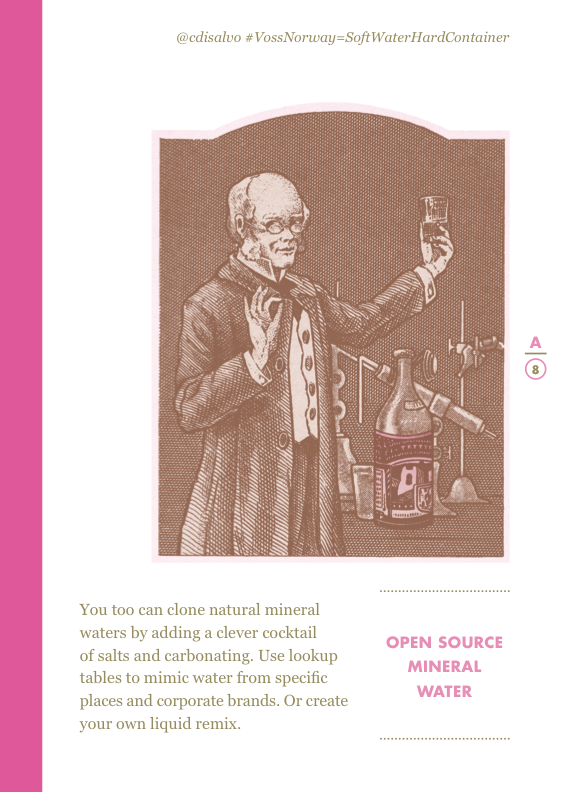
Thanks to Carl Disalvo for the reference to instructions on making your own mineral water at home.
IMAGE
Title: Hungarian mineralwater firms’ advertisements before 1920
Author: Takkk
Source: wikimedia commons
By Intern #1.
As it turns out, working with artists is exposing me to kitschy home appliances I never would have known existed. Case in point: the SodaStream.
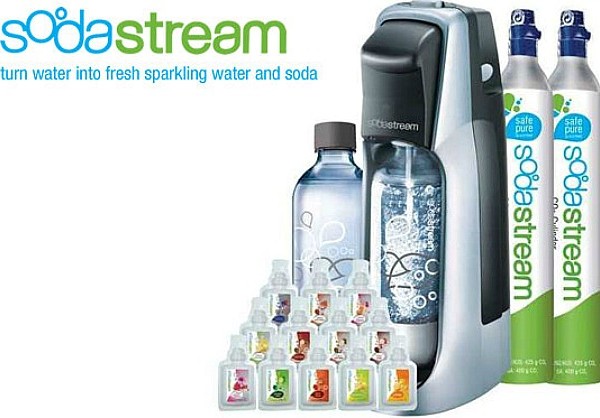
I had some vague notion of this machine’s existence but no clue as to its popularity. In case you are just as oblivious as I, allow me to explain what this appliance is. It is simplistic in design and is essentially plastic housing for a CO2 canister and a pour spout allowing people to carbonate water and create their own sodas.

Supposedly, only water should be run through the machine but I can’t fathom a world in which a machine with the power to carbonate liquids could possibly exclude booze. Reasons like this are probably why I am not allowed to own said appliance. Also- why I do not own a deep-fryer. I’m just the intern. I’ll leave it to the artists to go rogue and exploit the kitchen gadgets.
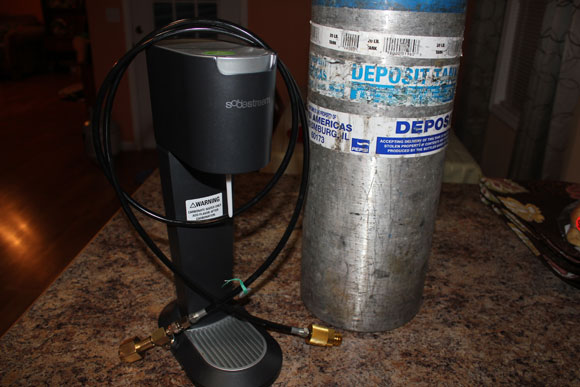
So, the deal with these SodaStreams is that they have a proprietary CO2 canister that ends up costing the user a lot of money that hardly makes at-home carbonated beverages seem worth it. But, the geniuses on the internet have come up with several hacks (modifications) to make the threading fit regular paintball CO2 canisters and large tanks alike.
The most hilariously named hack of them all is the FreedomOne. I don’t know about you, but I imagine an entire ad campaign of people frolicking into the streets, tossing their SodaStream CO2 canisters aside as if they were the bras from recently liberated women and slow-motion running whilst high-fiving one another. Be freed from the burden of costly proprietary CO2 tanks (but not your soda addiction) and get the FreedomOne! In all seriousness though, of the hacks available, this one seems the most logical since it will work with all the past and present SodaStream models and various sized CO2 tanks. Links are posted below for several how-tos and sites for ordering parts.
Long live fizzy drinks and down with the man!


Installed at the Weird Shift Con in June 2013.